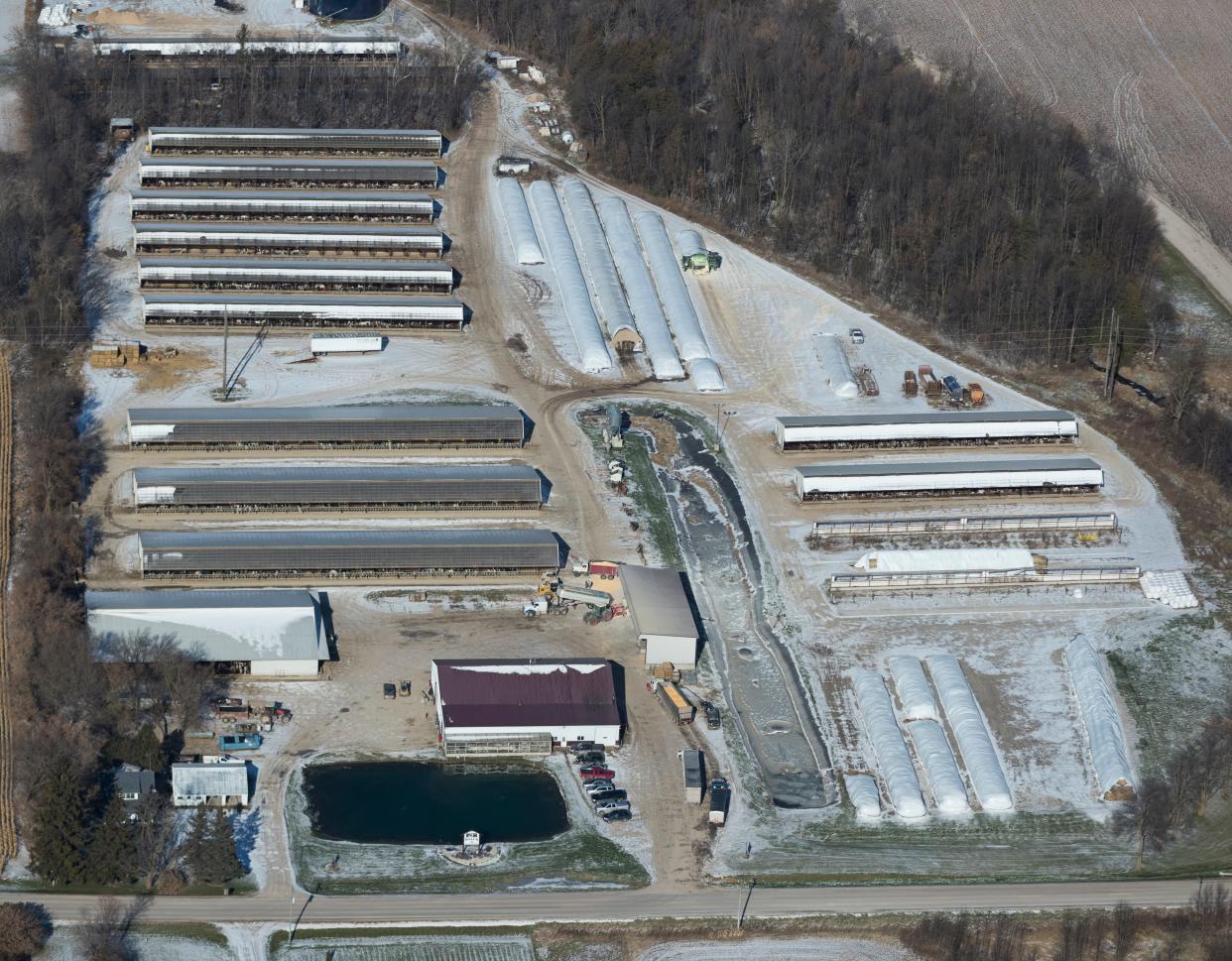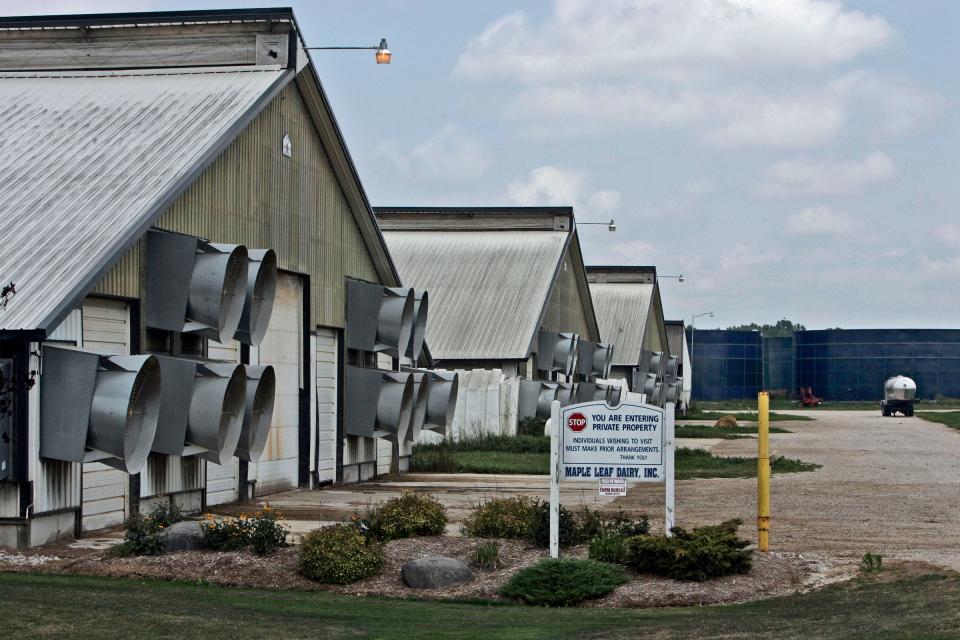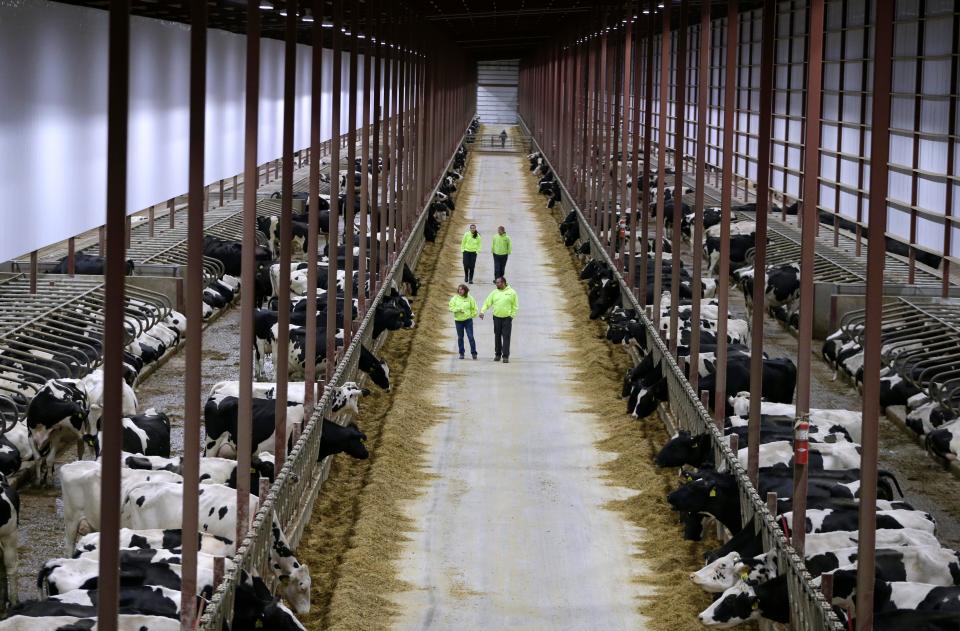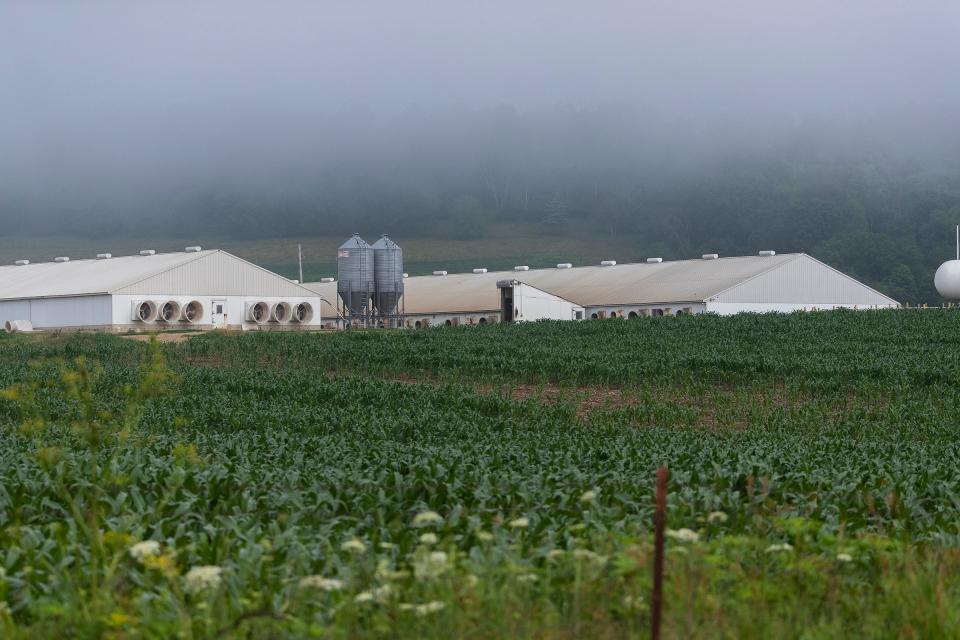Massive factory farms called CAFOs are on the rise as small family operations fade. Here is why they're controversial in Wisconsin

Factory farms are a hot-button topic in Wisconsin, a state that was once home to thousands of small family farms.
The large-scale animal operations, which can produce milk, beef, chicken, turkeys and pigs, are popping up all over the state, worrying some activists and nearby residents. They say the farms can drive down home values, pollute water and cause harm to the land. Supporters argue the farms are the key to feeding the world.
So what are CAFOs? Here's what you should know.
What are CAFOs?
A concentrated animal feeding operation is defined in Wisconsin as an operation housing 1,000 or more animals, according to the Department of Natural Resources. Smaller-scale animal feeding operations can also receive CAFO designations if they have pollutant discharges to navigable waters or contaminates a well.
CAFOs in Wisconsin must apply for and receive a wastewater permit, under the Wisconsin Pollutant Discharge Elimination System. The permits ensure farms use proper planning, nutrient management and construction to protect waters of the state. However, the permits only apply to water quality protection — meaning the state does not regulate air, odor, traffic, lighting, land use or other controversial topics surrounding the large-scale farms, the DNR website said.
How many CAFOS are there in Wisconsin?
Wisconsin has 327 CAFOs, according to DNR data. Of those, the majority are dairy, but the state also has hog, beef, chicken and turkey CAFOs.
Where are they?
CAFOs are spread across the state, but the largest concentrations of farms are in Manitowoc County, which is home to 25 CAFOs, Brown County, home to 23, Kewaunee County with17 and Fond du Lac County with 16, according to DNR data.
Why are they controversial?

CAFOs tend to be hotly debated for a number of reasons.
One of the largest is the potential for water contamination — for both surface water and groundwater. Manure produced at CAFOs is typically mixed with water, creating a watery substance that is stored at the farm until the operation is able to spread the mix on nearby farm fields.
That practice, called land-spreading, can sometimes result in the manure substance running into surface waters, causing pollution, or it can soak into the ground and into the water table below, polluting groundwater.
While a number of the components of manure — such as phosphorus ammonia — are concerning, one of the largest issues for CAFOs is nitrate. Studies suggest that drinking water with elevated levels of nitrate over a sustained period can cause birth defects, thyroid problems and colon cancer.
Pregnant women and babies are the most vulnerable. The contaminant has been associated with a condition called blue baby syndrome, which reduces the amount of oxygen in a baby’s blood.
Other concerns surrounding CAFOs are the odors that come from large numbers of animals and their manure, lighting from barns, damage to roads by trucks entering and leaving the farms and the treatment of animals housed at the operations.
Why are CAFOs needed?
While controversy tends to swirl around factory farms, the farmers who run them argue for their importance.
Large-scale dairy farms produce about 58% of the nation's milk supply and are cheaper to run than smaller-scale farms.
And other large-scale farms producing beef, turkey, pork and chicken are able to provide more affordable meat options to a larger number of people.
Large-scale farming can also provide a legacy for some farming families.
One farmer, who owns a hog CAFO in Crawford County, said large-scale farming is one way to ensure there is something to pass on in the future.
"I want to have something so that if one of my kids wants to take over the farm, they can," said Howard "AV" Roth, owner of Roth Feeder ig.
What about that CAFO in Kewaunee County?

One of the most controversial CAFOs in Wisconsin is Kinnard Farms, located in Kewaunee County. The farm raises and milks dairy cows.
More: Kewaunee county factory farm sues DNR over new permit that limits animals, orders water monitoring
Residents in the area around the farm have faced issues with nitrates in their drinking water, as well as issues with odors coming from the farm. The community for years has asked the DNR to more closely regulate the farm and cap the number of animals allowed on the property, as well as require groundwater monitoring near the field on which the farm spreads manure.
Residents were handed a victory in March when the DNR capped the number of animals at the farm's current number — 8,000 — and said the farm must monitor water at two locations at least. The newly issued permit was set to expire in January 2023.
But the farm is fighting back against those terms with a lawsuit, saying that monitoring wells is too expensive and the inability to grow its herd will hurt business.
Are there any other hotly debated CAFOs?
A newly permitted CAFO in Crawford County has also raised concerns for advocates and nearby residents.
Roth Feeder II, a hog CAFO, will breed and sell piglets for other farms in the Midwest. It's the second factory farm owned by Roth, who is the former president of the National Pork Producers Council.
The farm will employ 14 people full time, documents say, and will pay out about $900,000 a year in salaries, in addition to more paid out to four part-time workers.
People in the community surrounding the proposed CAFO asked the DNR to more closely examine the area where the operation would be built, due to the unusual geology of the Driftless Area and a short distance to groundwater. The residents said they worried about nitrate and other contaminants, which have already been found in water near Roth's other facility.
The DNR issued a permit without further studying the land, much to the dismay of those residents. They now hope to challenge the DNR's decision, potentially putting the construction of the new farm on hold.

What about smaller farms?
Activists against CAFOs have argued in recent years that the large farms may be what is fueling the decline of smaller family-owned farms in Wisconsin. Nearly 3,000 farms have gone out of business in recent years because of low pay and high costs of running the operation.
Before the rise of large commercial farms, there were more than 10,000 farms in Wisconsin, most of them small, family-owned operations passed down from generation to generation.
But recently, drops in the price of milk and poor harvests leading to a lack of feed for cattle have led those small operations to shutter, while large-scale farming has grown.
More: 'This isn't the way I wanted it to end': Dairy farm shuts down after 148 years
Is the state doing anything about pollution stemming from CAFOs?
Nitrate is currently not regulated in Wisconsin, with rules failing to move forward last year after the DNR fell behind on the drawn-out process to create administrative rules for the contaminant.
The agency was also granted the ability to require groundwater monitoring for CAFOs by a 2021 state Supreme Court decision, which activists hope will keep water cleaner by notifying farmers and the DNR of issues before they reach the private wells of citizens.
Is there any other use for manure from CAFOs besides fertilizer?
Manure from dairy CAFOs could find a new purpose: energy.
Some of the nation's largest dairies are installing anaerobic methane digesters that convert manure gas into fuel to run vehicles like buses and trucks. The digesters can be a profitable side business for dairy owners and an additional way to get rid of manure where there is too much to be applied to the soil.
Wisconsin has 318 methane digesters, including around 50 on dairy farms, according to the state Public Service Commission. Most are at wastewater treatment plants, landfills, food manufacturers and industrial sites.
Wisconsin has more methane digesters than nearly any other state.
Laura Schulte can be reached at leschulte@jrn.com and on Twitter at @SchulteLaura.
About this feature
This is a weekly feature for online and Sunday print readers delving into an issue in the news and explaining the actions of policymakers. Email suggestions for future topics to jsmetro@jrn.com.
Our subscribers make this reporting possible. Please consider supporting local journalism by subscribing to the Journal Sentinel at jsonline.com/deal.
DOWNLOAD THE APP: Get the latest news, sports and more
This article originally appeared on Milwaukee Journal Sentinel: CAFOs are on the rise in Wisconsin. What to know about factory farms

